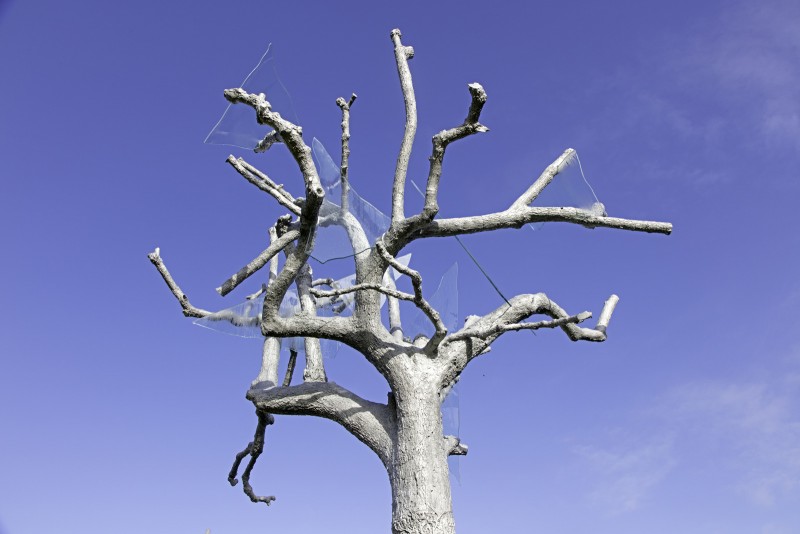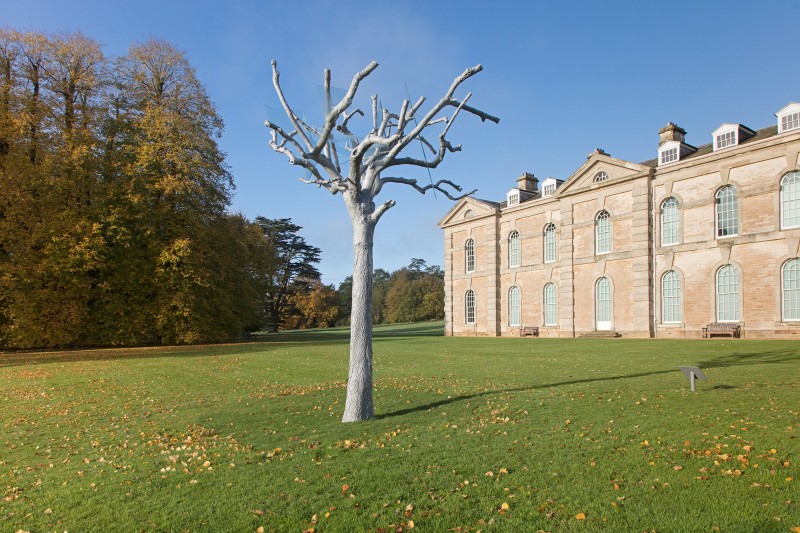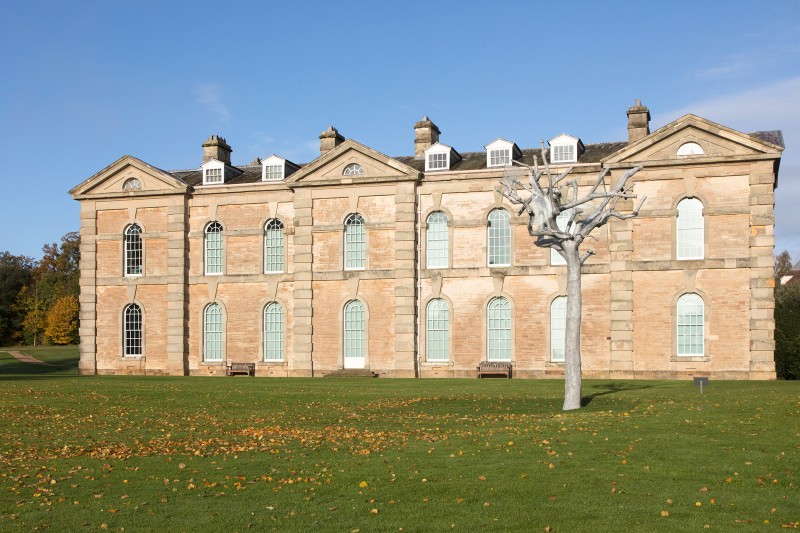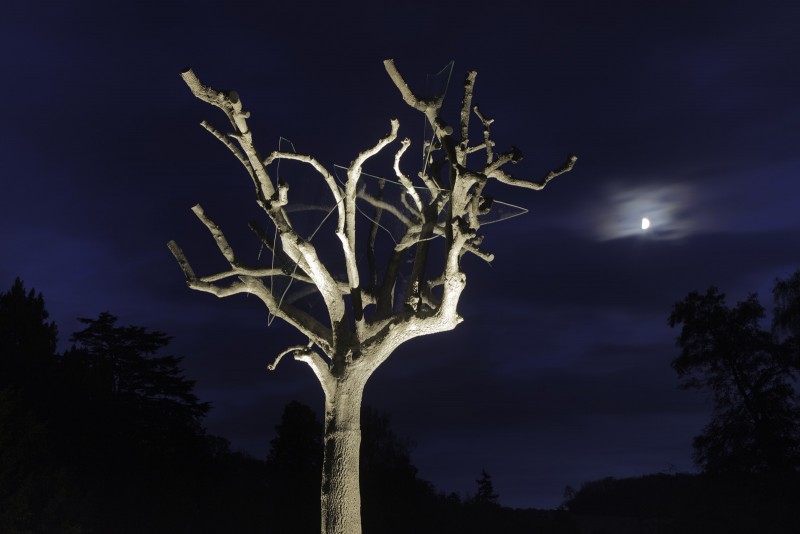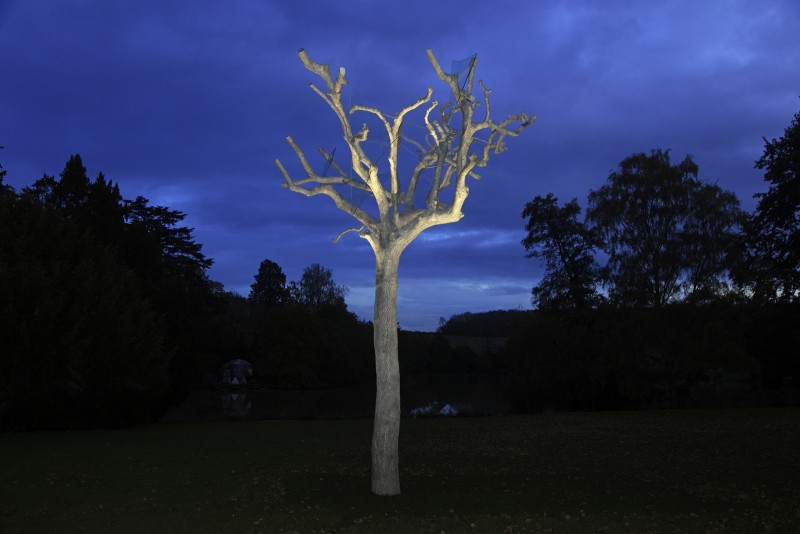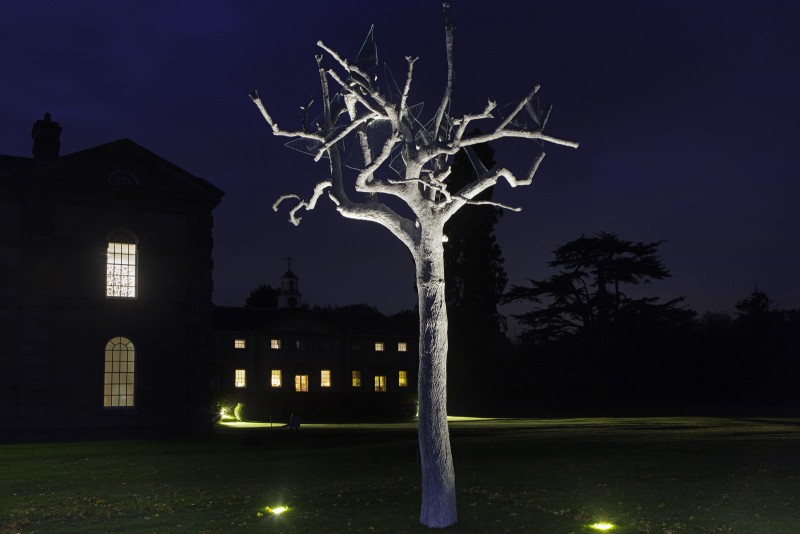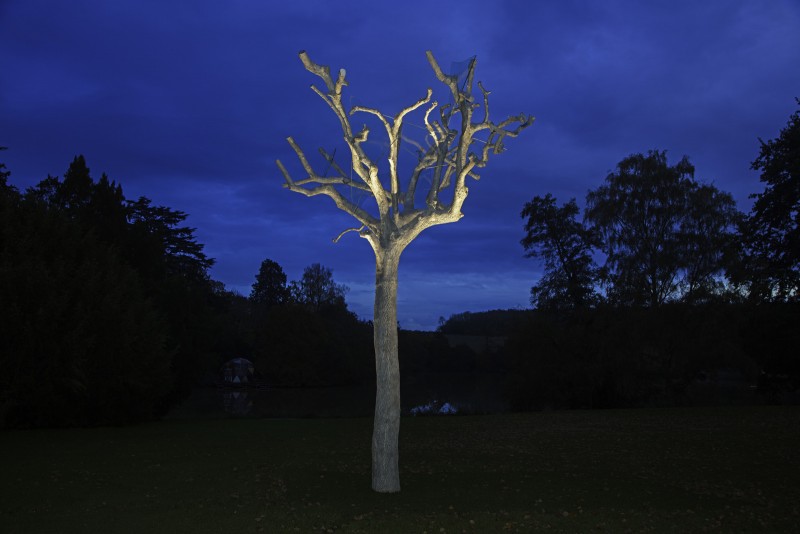Ariel Schlesinger
Ways To Say Goodbye
Ways To Say Goodbye is a 6-metre high sculpture of a tree commissioned by Compton Verney. It is the first UK commission for Ariel Schlesinger, and his first work to be located outdoors in rural parkland. The piece was especially commissioned for the grounds of Compton Verney, where an open lawned area was selected for its installation and presentation. The placement was important, standing in its own space yet not far from other trees and also just a short distance from the lake and from the House itself.
At a distance the sculpture appears to be a tree like any of the others in the vicinity. Up close, it’s clear that it is not an ordinary, natural object but is an artificial tree cast into aluminium. High up in its branches large glass shards are nested, as if collected there by animals or maybe by the wind.
Since its establishment as an art gallery run by the Compton Verney House Trust, the exploration of the relationship between art and nature has been central to its mission and vision. The grounds, designed by Lancelot ‘Capability’ Brown and featuring 120 acres of meadows, lakes, woodland and undulating lawns, have been the focus of a contemporary art commissioning programme since 2000. Despite its natural appearance, the parkland is the product of years of carefully considered design and of labour. It is teaming with imported species, planted with precision around man-made features, designed to guide and control the visitor’s experience of the landscape.
In a nod to Brown’s approach, Ways To Say Goodbye embraces the theme of nature and artifice, highlighting the co-dependence of humans and nature through the figure of a tree. Schlesinger says he felt an affinity with ‘Capability’ Brown’s way of working, and was determined to create something that would at first appear natural. In a short interview about the commission he explained:
“I felt immediately that I wanted to make something that will blend into the park in the shape of a living organism, so that at first glance it might even look part of the living surroundings. The second view might reveal a different story, maybe even a tragic one… and maybe that’s the paradox here, as much as the tree resembles its surroundings, it is also clearly an outsider, and that’s fine.”
The work was commissioned to be in place for a year from October 2019 so visitors would see it in a range of light and weather conditions as the seasons changed around it.
About the artist
Ariel Schlesinger (b. 1980, Israel) is an artist whose minimal, precise intervention into everyday objects challenges perceptions and encourages us to look carefully at the world around us. Describing his works as ‘prototypes’ built quickly to communicate an idea – Schlesinger’s output encompasses sculpture, installation art and conceptual art. Rooted in the everyday, his work typically combines playful humour with the imminent threat of destruction or danger. At the Dvir Gallery in Tel Aviv, Schlesinger broke all the windows in the gallery’s storage space, then presented photographs of the broken windows as artworks to the gallery. In his prizewinning 2009 installation A Car Full of Gas, Schlesinger filled the front seats of a mini with two gas canisters and set a small flame burning outside the car’s front window.
In 2017 Schlesinger won an international competition to design a large-scale public work for the Jewish Museum in Frankfurt. The work, an 11m high sculpture of two intersecting trees, opens in April 2020.
